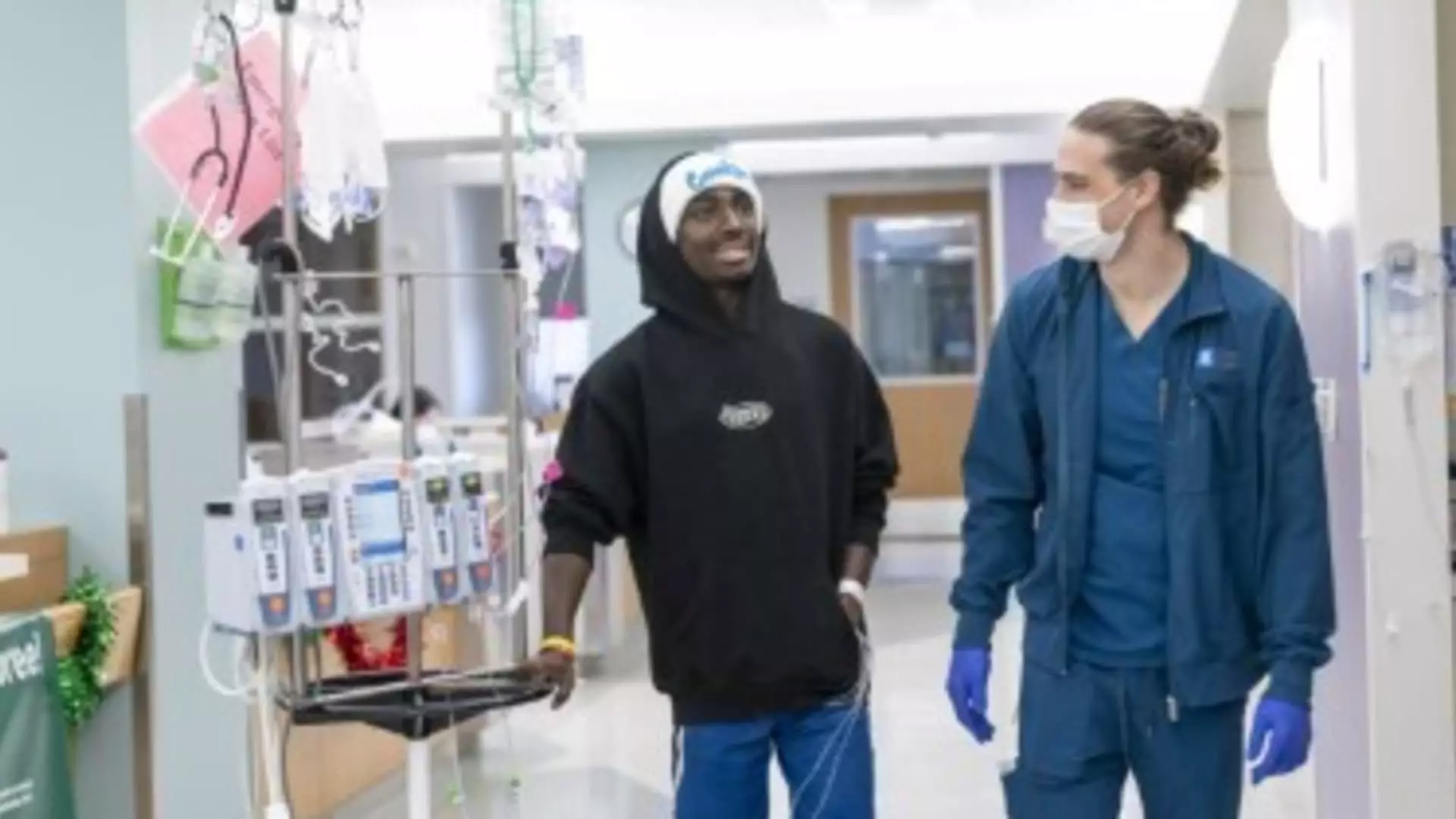Sickle cell disease, a hereditary blood disorder marked by the abnormal shape of red blood cells, has long posed a significant challenge to the lives of those affected. Deshawn “DJ” Chow’s experience illustrates the profound impact this condition can have, particularly on young individuals and their families. Beginning in his early teens, Chow faced relentless pain episodes that forced him to miss school and repeatedly seek hospital care. For many like him, the release of new gene therapies brings a glimmer of hope amidst the struggles associated with sickle cell disease. However, as advancements emerge, they also uncover the complexity surrounding access, cost, and implementation.
Recent developments in gene therapy have sparked optimism among patients suffering from sickle cell disease. The Food and Drug Administration (FDA) approved innovative treatments like Vertex Pharmaceuticals’ Casgevy, which has demonstrated significant potential to alleviate the debilitating symptoms associated with sickle cell. For DJ Chow and his family, the approval meant they could pursue a path toward improved health. Upon successfully navigating insurance challenges, the Chow family commenced treatment at City of Hope Children’s Cancer Center—an experience shared by a select group of patients with the same outlook.
Despite the groundbreaking nature of these treatments, their exorbitant costs—exceeding $2 million in many cases—raise urgent questions about accessibility. Chow’s case exemplifies the potential of gene therapy to restore quality of life, yet highlights a broader issue: Not every patient will have the same financial means or health insurance coverage, which raises concerns about equity in healthcare access. As the treatment landscape evolves, it is critical to ensure that such advancements do not become privileges for the wealthy, but instead remain accessible to all patients in need.
DJ’s journey through treatment has not been without its challenges. The process involved multiple hospitalizations and associated procedures, including chemotherapy, indicating that the path to recovery can be arduous. Yet, post-treatment, DJ has begun to envision a future where he can engage in physical activities he has long dreamed of, such as snowboarding and surfing. These aspirations serve as a testament to the potential of gene therapy to not only heal but also restore hopes and dreams that sickle cell disease may have suppressed.
However, only a limited number of patients have undergone these treatments since their FDA approval—a fact that underscores both the complexity of treatment protocols and the present inadequacies in healthcare systems to accommodate escalated demand. Out of over 100,000 individuals affected by sickle cell disease in the United States, the first year saw merely a fraction receiving the sought-after therapies. The slow uptake highlights the need for systemic changes that can facilitate wider access to gene therapies, particularly for younger patients whose organs remain undamaged by the disease.
For many families, securing coverage for these expensive treatments has become a significant hurdle. Hospitals like City of Hope have faced difficulties in navigating insurance policies and reimbursement processes, especially as they try to establish new billing codes with insurers. This adds another layer of complexity, as healthcare providers work against a backdrop of existing payment models that may not suit the steep costs associated with cutting-edge therapies.
While some insurance companies have begun to accommodate these gene therapies, the overall healthcare infrastructure struggles to keep pace with rapid innovations. The high costs pose a financial burden not only on individual patients and families but also on state and federal health programs. With considerable proportions of sickle cell patients reliant on Medicaid, which serves low-income Americans, the pressure on these programs could lead to substantial fiscal challenges in the coming years.
In response to these challenges, healthcare executives are exploring new financial models designed to spread the costs of these high-priced treatments more equitably among patient populations. This may involve reshaping how Medicaid and private insurers approach coverage for gene therapies—treatments that could revolutionize care standards but require a rethinking of traditional reimbursement frameworks.
Additionally, the administration of outcomes-based payment models may aid states facing budget constraints while attempting to roll out these therapies. However, the introduction of such systems will necessitate cooperation among diverse stakeholders, including healthcare providers, insurance companies, and government entities. Timely adaptation is vital to ensure that breakthroughs in treatment are not rendered moot by bureaucratic and financial barriers.
Deshawn “DJ” Chow’s story signifies a hopeful shift in the fight against sickle cell disease, driven by advanced gene therapy innovations. Yet, as the healthcare conversation evolves, it is essential to address the consequential challenges, particularly those surrounding access and affordability. As research and discussions advance, the overarching goal must remain clear: fostering equitable access to life-altering treatments so that all affected individuals may aspire to live full, fulfilling lives. For families impacted by sickle cell, the journey continues, shaped by hope and resilience amid evolving healthcare landscapes.

